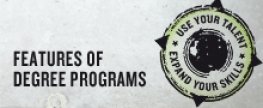
Apply
now
now
Dynamics and Hydromechanics
level of course unit
First cycle, BachelorLearning outcomes of course unit
Through the “Dynamics” component, the students are able to:
• Analyze physical problems in the field of dynamics independently,
• Develop solution methods and devise solutions.
• Reduce technical systems of a mechanical nature to the underlying physical principles.
• Apply mathematical methods to solve physical problems.
• Independently identify problems in technical systems, develop physical models for solutions and estimate the feasibility of physical processes.
• Describe, present and pass on knowledge gained.
Through the “Hydromechanics” component, the students are able to:
• Describe the essential material properties of liquids.
• Determine and calculate the forces acting on geometric surfaces due to hydrostatic pressure.
• Calculate the momentum of simple geometric bodies.
• Apply and calculate the continuity and energy equations to simple hydraulic systems.
• Analyze simple systems of pipe hydraulics and calculate the occurring pressure losses, volume flows and flow velocities.
• Apply the impulse and twist laws to simple hydraulic systems and calculate the force effect of flowing fluids.
• Apply similarity laws to simple hydraulic systems.
• Analyze physical problems in the field of dynamics independently,
• Develop solution methods and devise solutions.
• Reduce technical systems of a mechanical nature to the underlying physical principles.
• Apply mathematical methods to solve physical problems.
• Independently identify problems in technical systems, develop physical models for solutions and estimate the feasibility of physical processes.
• Describe, present and pass on knowledge gained.
Through the “Hydromechanics” component, the students are able to:
• Describe the essential material properties of liquids.
• Determine and calculate the forces acting on geometric surfaces due to hydrostatic pressure.
• Calculate the momentum of simple geometric bodies.
• Apply and calculate the continuity and energy equations to simple hydraulic systems.
• Analyze simple systems of pipe hydraulics and calculate the occurring pressure losses, volume flows and flow velocities.
• Apply the impulse and twist laws to simple hydraulic systems and calculate the force effect of flowing fluids.
• Apply similarity laws to simple hydraulic systems.
prerequisites and co-requisites
not applicable
course contents
Dynamics component:
• Kinematics of the mass point; description of the movement of the mass point, velocity, acceleration, relative movement
• Kinetics of the mass point; Newtonian law, momentum theorem, spin theorem, energy conservation theorem
• Kinematics and kinetics of the rigid body: Kinematics of the general motion of a rigid body, mass moment of inertia, impulse theorem, twist theorem, energy conservation theorem, systems of rigid bodies
• Impact processes; straight central impact, eccentric impact
• Vibrations; classification of vibrations, free and forced vibrations, damped and undamped vibrations, resonance
Hydromechanics component:
• Substance properties of liquids and gases
• Hydrostatic pressure
• Buoyancy
• Equation of continuity
• Energy equation
• Pipe hydraulics
• Outflow from containers
• Principle of linear momentum
• Principle of angular momentum
• Laws of similarity
• Kinematics of the mass point; description of the movement of the mass point, velocity, acceleration, relative movement
• Kinetics of the mass point; Newtonian law, momentum theorem, spin theorem, energy conservation theorem
• Kinematics and kinetics of the rigid body: Kinematics of the general motion of a rigid body, mass moment of inertia, impulse theorem, twist theorem, energy conservation theorem, systems of rigid bodies
• Impact processes; straight central impact, eccentric impact
• Vibrations; classification of vibrations, free and forced vibrations, damped and undamped vibrations, resonance
Hydromechanics component:
• Substance properties of liquids and gases
• Hydrostatic pressure
• Buoyancy
• Equation of continuity
• Energy equation
• Pipe hydraulics
• Outflow from containers
• Principle of linear momentum
• Principle of angular momentum
• Laws of similarity
recommended or required reading
• Assmann (2010): Technische Mechanik Bd. 3 T: Kinematik und Kinetik, Oldenbourg Wissenschaftsverlag München
• Böswirth (2007): Technische Strömungslehre: Lehr- und Übungsbuch, 7. Aufl., Vieweg+Teubner Verlag Wiesbaden
• Bohl, Elmendorf (2008): Technische Strömungslehre, 14. Aufl., Vogel Business Media Würzburg
• Böge (2011): Technische Mechanik: Statik – Dynamik – Fluidmechanik – Festigkeitslehre, 29. Aufl., Vieweg+Teubner Verlag Wiesbaden
• Junge (2011): Einführung in die Technische Strömungslehre, Fachbuchverlage Leipzig Mayr (2012): Technische Mechanik: Statik – Kinematik – Kinetik – Schwingungen – Festigkeitslehre, 7. Aufl., Carl Hanser Verlag München
• Richard, Sander (2008): Technische Mechanik. Dynamik – effektive und anwendungsnah, Vieweg+Teubner Verlag Wiesbaden
• Böswirth (2007): Technische Strömungslehre: Lehr- und Übungsbuch, 7. Aufl., Vieweg+Teubner Verlag Wiesbaden
• Bohl, Elmendorf (2008): Technische Strömungslehre, 14. Aufl., Vogel Business Media Würzburg
• Böge (2011): Technische Mechanik: Statik – Dynamik – Fluidmechanik – Festigkeitslehre, 29. Aufl., Vieweg+Teubner Verlag Wiesbaden
• Junge (2011): Einführung in die Technische Strömungslehre, Fachbuchverlage Leipzig Mayr (2012): Technische Mechanik: Statik – Kinematik – Kinetik – Schwingungen – Festigkeitslehre, 7. Aufl., Carl Hanser Verlag München
• Richard, Sander (2008): Technische Mechanik. Dynamik – effektive und anwendungsnah, Vieweg+Teubner Verlag Wiesbaden
assessment methods and criteria
Assignment, presentation and written exam
language of instruction
Germannumber of ECTS credits allocated
4eLearning quota in percent
15course-hours-per-week (chw)
2.5planned learning activities and teaching methods
Integrated course







